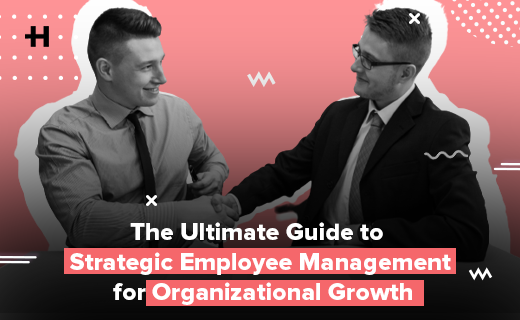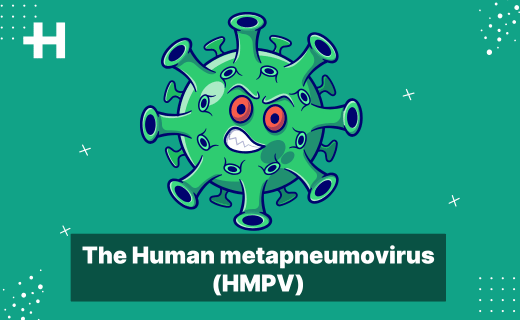Effective employee management is critical for the success of any organization. It involves developing and implementing strategies to attract, retain, and develop employees, as well as ensuring that their performance is aligned with the organization’s goals and objectives. In this blog, we’ll explore the role of strategic management in employee management, the five steps of strategic employee management, the four employee management strategies, the difference between employee management and HRM, the impact of strategic employee management, and the best employee management strategy.
Table of Contents
The Role of Strategic Management in Employee Management:
Strategic management in employee management involves the development and implementation of strategies that align an organization’s employee management function with its overall goals and objectives. This involves:
- Identifying the organization’s employee management needs and priorities
- Developing employee management policies and procedures that support the organization’s goals and objectives
- Ensuring that the organization’s employee management function is well-managed and well-aligned with the organization’s strategies
The 5 Steps of Strategic Employee Management:
The five steps of strategic employee management are:
- Establishing the strategic direction: This involves defining the organization’s overall goals and objectives, as well as its employee management goals and objectives.
- Analyzing the organization’s employee management capacity: This involves assessing the organization’s current employee management capabilities and identifying any gaps that need to be addressed.
- Developing employee management strategies: This involves developing strategies to address any gaps in the organization’s employee management capabilities and aligning the employee management function with the organization’s overall goals and objectives.
- Implementing employee management strategies: This involves implementing the employee management strategies that have been developed and monitoring their effectiveness.
- Evaluating the employee management strategies: This involves evaluating the effectiveness of the employee management strategies that have been implemented and making any necessary adjustments.|
The 4 Employee Management Strategies:
The four employee management strategies are:
- Talent management: This involves attracting, developing, and retaining top talent.
- Performance management: This involves ensuring that employees are performing at their best and that their performance is aligned with the organization’s goals and objectives.
- Succession planning: This involves developing a plan to ensure that the organization has the right people in the right positions to achieve its long-term goals.
- Workforce planning: This involves forecasting the organization’s future employee needs and developing a plan to ensure that it has the right mix of skills and expertise to meet those needs.
The Difference Between Employee Management and HRM:
Employee management and human resource management (HRM) are two terms that are often used interchangeably. However, there are some significant differences between the two.
Employee management primarily focuses on the day-to-day management of employees in an organization. This includes managing employee schedules, workloads, and performance. Employee management also includes managing employee morale, communication, and interpersonal relationships. The main goal of employee management is to ensure that employees are productive, engaged, and satisfied with their work.
On the other hand, HRM is a broader term that encompasses all aspects of managing an organization’s workforce. This includes hiring and recruiting, training and development, compensation and benefits, employee relations, and legal compliance. HRM is a strategic function that focuses on aligning an organization’s workforce with its overall goals and objectives.
One of the key differences between employee management and HRM is their focus. Employee management primarily focuses on managing the day-to-day tasks associated with managing employees, while HRM takes a more strategic approach to managing an organization’s workforce. HRM focuses on developing and implementing strategies that align an organization’s workforce with its overall goals and objectives.
🏥 Insurance
👀 Dental and Vision
💪 Gym memberships
🩺 Health checkups
📞 Doctor tele-consultations
The Impact of Strategic Employee Management:
Strategic employee management can have a significant impact on an organization’s success. Here are some of the ways that strategic employee management can impact an organization:
- Improved Employee Performance: Strategic employee management can lead to improved employee performance. By aligning employee goals and objectives with the organization’s goals and objectives, employees are more likely to be engaged, motivated, and productive.
- Enhanced Employee Retention: Effective strategic employee management can help organizations retain their top talent. When employees feel that they are valued and supported, they are more likely to stay with the organization.
- Increased Employee Satisfaction: Strategic employee management can also lead to increased employee satisfaction. When employees feel that they are being treated fairly and have opportunities for growth and development, they are more likely to be satisfied with their work and the organization.
- Greater Efficiency: By managing employees strategically, organizations can also achieve greater efficiency. This can include streamlining processes, reducing turnover, and improving communication and collaboration.
- Improved Organizational Performance: Ultimately, strategic employee management can have a significant impact on an organization’s overall performance. By aligning employee goals and objectives with the organization’s goals and objectives, organizations can achieve greater success.
Strategic employee management can have a significant impact on an organization’s success. By aligning employee goals and objectives with the organization’s goals and objectives, organizations can improve employee performance, enhance employee retention and satisfaction, achieve greater efficiency, and ultimately improve their overall performance.
Get affordable and customisable plans to secure your team
The Best Employee Management Strategy:
There are several strategies that organizations can use for effective employee management, but the best employee management strategy depends on the specific needs and goals of the organization. However, here are some key components of an effective employee management strategy:
- Clear Communication: Effective employee management starts with clear communication. It is important to establish open lines of communication with employees, and to clearly communicate expectations, goals, and feedback. Regular meetings and check-ins can also help to maintain clear communication.
- Employee Development: Organizations should invest in employee development to ensure that employees have the skills and knowledge they need to perform their jobs effectively. This can include training programs, mentoring, and career development opportunities.
- Employee Recognition: Employee recognition is an important component of employee management. Recognizing employees for their hard work and contributions can help to boost morale and increase motivation.
- Performance Management: Effective performance management is key to employee management. This includes setting clear performance goals, providing regular feedback, and conducting performance evaluations.
- Work-Life Balance: Organizations should also strive to promote work-life balance for employees. This can include flexible work arrangements, time off policies, and wellness programs.
- Fair Compensation and Benefits: Offering fair compensation and benefits is important for attracting and retaining top talent. Organizations should regularly review their compensation and benefits packages to ensure they are competitive.
- Diversity and Inclusion: A focus on diversity and inclusion is also an important component of effective employee management. This includes creating a workplace culture that is inclusive and welcoming to all employees, and taking steps to promote diversity in hiring and promotion practices.
In conclusion, the best employee management strategy involves clear communication, employee development, employee recognition, performance management, work-life balance, fair compensation and benefits, and a focus on diversity and inclusion. By focusing on these key components, organizations can effectively manage their employees and achieve greater success.
Conclusion
Employee management is a critical aspect of organizational success. Effective employee management involves a strategic approach that aligns employee goals and objectives with the organization’s goals and objectives. By investing in employee development, promoting work-life balance, offering fair compensation and benefits, and creating a diverse and inclusive workplace culture, organizations can effectively manage their employees and achieve greater success.
It is important to note that employee management is not a one-size-fits-all approach. The best employee management strategy will depend on the specific needs and goals of the organization. By regularly assessing the effectiveness of their employee management strategy and making adjustments as needed, organizations can continue to improve their approach to employee management and achieve even greater success.
TLDR? too long, didn’t read?
The impact of strategic employee management extends beyond just organizational success. It can also lead to increased employee satisfaction, retention, and engagement. By investing in their employees and creating a positive work environment, organizations can reduce employee turnover and the associated costs of recruitment and training. Additionally, engaged employees are more productive and motivated, leading to better performance and increased profitability for the organization.
Furthermore, effective employee management can also enhance the organization’s reputation and brand image. A company that is known for treating its employees well and creating a positive workplace culture is more likely to attract top talent and loyal customers.
Therefore, it is important for organizations to prioritize strategic employee management as a key component of their overall business strategy. By doing so, they can not only achieve greater success but also create a positive impact on their employees, customers, and broader society.
FAQs:
Q: What is the role of strategic management in employee management?
Strategic management in employee management involves developing and implementing strategies that align an organization’s employee management function with its overall goals and objectives.




